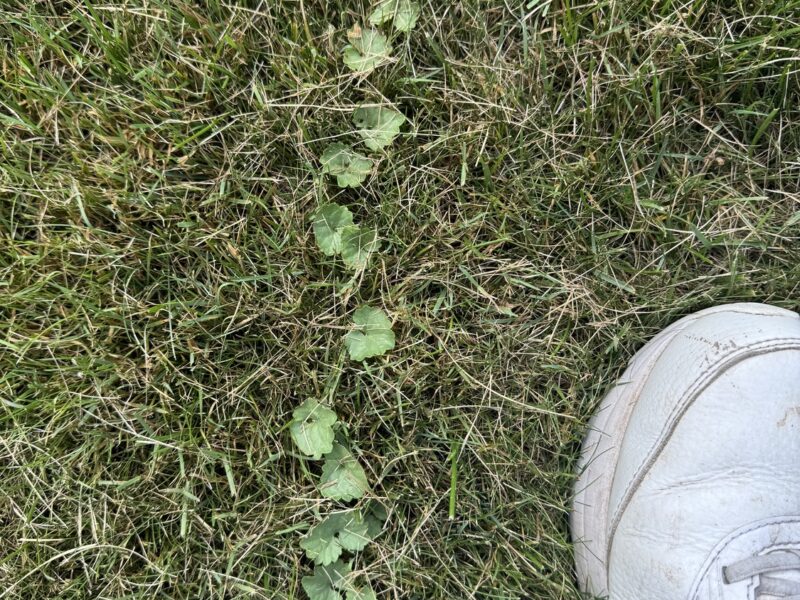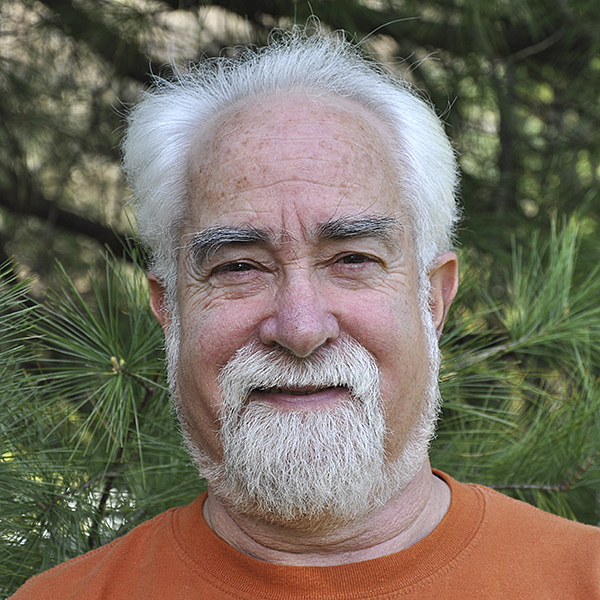

As I was mowing the lawn on a hot day at the end of July, I noticed the first signs. The leaf drop from a couple of tall wild cherry trees had begun. It’s one of the first signs of the change in the seasons. Then after mowing I noticed other clues. Bare spots on the lawn are populating with weeds, crabgrass was showing up along the edges of the driveway and small bits of the succulent purslane were showing up in a few landscape beds.
Now, to put things into perspective, the lawn looks awful after a summer of stingy rainfall and more than enough heat to leave sunny areas browning and thirsty. A perfect scenario for weeds, which by their nature, thrive in situations like this. But there’s one other element that needs to be thrown in. For the first time in several years I didn’t apply a preemergent herbicide in late spring. Well, the experiment worked (badly) and now I’m suffering the consequences. Weeds, weeds and more weeds.
It’s all been in the name of science and journalism. But now what? Well, the good news is that as the days and nights cool down it’s the perfect time to reestablish the lawn that I love so much. There’s work to be done first though, and I’ll need to keep a sharp eye on the weather to take advantage of any rain that will assist with the seed germination. But first, the weeds. I need a plan. YOU need a plan. To approach this haphazardly will result in a waste of time, money and water. Here’s my plan.
The first thing to do is to know what weeds are in your lawn and if you really need to get rid of them? Most, yes. Some no. And there are those that are pointless to try to control now, and that task will be addressed in the spring, but it becomes part of our master plan. Step one is to ID your weeds. There are many online resources and some only require you to use your phone to point the camera at the weed and get a response. These programs won’t tell you how to manage the weed, but knowing what it is will be your first step.
If the weed is an annual weed, like crabgrass, you’ll do nothing now especially if it’s already gone to seed. Most of the annual weeds, especially crabgrass have already begun to set and drop seeds that will germinate next spring. It’s these annual weeds and a few perennials that most preemergent herbicides (including corn gluten, which is organic but less effective than other methods) can take care of in the spring.
Perennial weeds, most of which have already emerged in your lawn, can be well managed now, and only their leaves are present. To ignore these weeds now, like dandelions, guarantees they’ll return next year, flower again, drop seed and start the cycle all over again. Our goal is to kill the young perennial weeds now and into the fall then knock out the annual weeds next spring — and then overseed with a good turfgrass seed blend in fall 2026. It’s that seed blend that will form a dense turf that’s your best defense against more weeds.
There is one plant that many Hamptons lawn owners consider a weed. This is white clover, and I rarely make any attempt to control it. Yes, it can become quite dense and in those cases some control may be necessary once — but just once. If it’s not invasive in your lawn, keep in mind that it adds nitrogen to your soil and feels soft under foot, and its white flowers are attractive to pollinators, especially honeybees. On the downside, if you have an allergy to bee stings you may want to discourage white clover.
Since we try to control perennial weeds in the late summer into early fall and annual weeds in the spring this weed project can take two years. You need to be persistent, on time (you can fudge but just a bit). And most importantly, if you’ve got a small lawn or a lawn with just spotty weed issues you can manage them on your own with a small 1-gallon sprayer.
Step one, identify your weeds. There are a number of online keys for this, but make sure you search for “lawn weeds of the Northeast.” For perennial weeds like dandelions, quackgrass (don’t confuse with crabgrass), plantain and ground ivy, spot spraying can be very effective. For nutgrass there are new and very effective herbicides that you can buy at local garden centers. While you can apply a granular herbicide with a spreader this method is usually overkill and means you probably won’t be able to overseed or plant new grass this year. Spot treating with a liquid herbicide that contains several chemical controls instead of just one will work best. They may discolor your surrounding grass but won’t kill it, only the weed.
Do your spraying when the lawns and weeds are dry (no dew) and no rain is expected for several hours or more. Some herbicides are rainfast in just hours while a few take longer. READ THE LABEL. Virtually all the chemical weed control you will use on your lawn are what we refer to as “selective,” meaning that it will only kill the target weeds (when used as directed) and not the lawn grasses. Use a coarse spray as fine sprays can drift with the slightest breeze. Only spray your target weed and be careful not to get the herbicide on ornamental plants or nearby vegetables.
Never apply liquid herbicides during hot periods as the chemicals can volatilize in the heat and affect nearby plants that the vapor comes into contact with. There are several commercial products (chemicals) that are available for weed control in lawns but look for those that contain triclopyr triethylamine salt. Products containing 2,4-D, mecoprop-p and dicamba are no longer legal for use in New York. And, if you have someone else doing your herbicide application, they must be a state-certified pesticide applicator. Also keep in mind that if you are planning on using vinegar as a weed killer, unlike the selective herbicides mentioned above, it will kill grass as well as weeds. Be cautious when using any herbicides where you have well water or near bodies of water, and never use them near the dunes, bays or ponds.
There are a few herbicides that are inappropriate for use in our sandy soils and critical water tables below us. These will be restricted in New York and not available at retail garden centers. Some landscape contractors, who mistakenly believe they may be doing you a favor, get this restricted material from other counties or states. Please, please discourage this practice by asking what your contractor is using and check online to assure it’s legal for use in Suffolk County. There will be an expansion of this ban to a few additional materials in 2026.
It can take several weeks for the weed(s) to totally die back, but you should start to see color changes and shriveling of the foliage in two or three days. If you don’t want to use chemicals, you can try other methods like horticultural vinegar, but vinegar is a nonselective herbicide and will kill anything it encounters and may need to be reapplied to ensure that the roots are dead. Use vinegar that’s 30 to 50 percent concentrated, and you don’t have to pay the big bucks for having the word “Horticultural” on the label. You just need the right percentage. Broadleaf lawn weeds can be managed with these selective herbicides if the weeds are actively growing, so into early October, but the sooner the better. And one more reminder, vinegar is not selective.
Many people with smaller properties can do most of their weed control with hand pulling (you must remove the root) or using a special weed removing tool. When removing purslane by hand, keep a few things in mind. Not only will this weed regrow from roots left behind but it will also reroot from just a single leaf, leaves or stem part left behind that will reroot and form a new plant. If you’ve ever rooted a jade plant leaf you’ll know what I mean. The leaf just needs to lie on the soil and in days a root emerges and a new plant is formed.
As for the annual weeds like crabgrass and annual bluegrass, the best control is a spring-applied, granular preemergent, which you can get at any local garden center. You’ll get the added benefit of some broadleaf weed control as well if seeds are still on or in the soil. These materials will control the weeds (seeds) for any given year, but I’ve noticed that crabgrass will creep back in as the seeds are carried down the road when it rains and the seedlings show up on the lawn and driveway edges. If these outbreaks aren’t spot treated this will be the source of new infestations.
While there are those that damn us that love our lawns it’s a dense, well-managed lawn that will naturally defy most weeds. This doesn’t mean gallons of herbicides or bags of weed-killers. It means having or building a good lawn and being persistent when it comes to removing weeds as they appear and overseeding bare spots so weeds can’t take hold. Enjoy your lawn and of course, keep growing.
 More Posts from Andrew Messinger
More Posts from Andrew Messinger